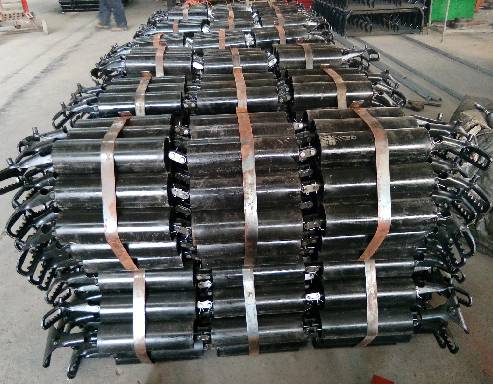 Afrikaans
Afrikaans  Albanian
Albanian  Amharic
Amharic  Arabic
Arabic  Armenian
Armenian  Azerbaijani
Azerbaijani  Basque
Basque  Belarusian
Belarusian  Bengali
Bengali  Bosnian
Bosnian  Bulgarian
Bulgarian  Catalan
Catalan  Cebuano
Cebuano  Corsican
Corsican  Croatian
Croatian  Czech
Czech  Danish
Danish  Dutch
Dutch  English
English  Esperanto
Esperanto  Estonian
Estonian  Finnish
Finnish  French
French  Frisian
Frisian  Galician
Galician  Georgian
Georgian  German
German  Greek
Greek  Gujarati
Gujarati  Haitian Creole
Haitian Creole  hausa
hausa  hawaiian
hawaiian  Hebrew
Hebrew  Hindi
Hindi  Miao
Miao  Hungarian
Hungarian  Icelandic
Icelandic  igbo
igbo  Indonesian
Indonesian  irish
irish  Italian
Italian  Japanese
Japanese  Javanese
Javanese  Kannada
Kannada  kazakh
kazakh  Khmer
Khmer  Rwandese
Rwandese  Korean
Korean  Kurdish
Kurdish  Kyrgyz
Kyrgyz  Lao
Lao  Latin
Latin  Latvian
Latvian  Lithuanian
Lithuanian  Luxembourgish
Luxembourgish  Macedonian
Macedonian  Malgashi
Malgashi  Malay
Malay  Malayalam
Malayalam  Maltese
Maltese  Maori
Maori  Marathi
Marathi  Mongolian
Mongolian  Myanmar
Myanmar  Nepali
Nepali  Norwegian
Norwegian  Norwegian
Norwegian  Occitan
Occitan  Pashto
Pashto  Persian
Persian  Polish
Polish  Portuguese
Portuguese  Punjabi
Punjabi  Romanian
Romanian  Russian
Russian  Samoan
Samoan  Scottish Gaelic
Scottish Gaelic  Serbian
Serbian  Sesotho
Sesotho  Shona
Shona  Sindhi
Sindhi  Sinhala
Sinhala  Slovak
Slovak  Slovenian
Slovenian  Somali
Somali  Spanish
Spanish  Sundanese
Sundanese  Swahili
Swahili  Swedish
Swedish  Tagalog
Tagalog  Tajik
Tajik  Tamil
Tamil  Tatar
Tatar  Telugu
Telugu  Thai
Thai  Turkish
Turkish  Turkmen
Turkmen  Ukrainian
Ukrainian  Urdu
Urdu  Uighur
Uighur  Uzbek
Uzbek  Vietnamese
Vietnamese  Welsh
Welsh  Bantu
Bantu  Yiddish
Yiddish  Yoruba
Yoruba  Zulu
Zulu Conveyor Idler Frame Design and Applications for Efficient Material Handling Systems
Understanding Conveyor Idler Frames An Essential Component in Bulk Material Handling
In the realm of bulk material handling, the efficiency and reliability of conveyor systems are paramount. One critical component that plays a significant role in the overall performance of these systems is the conveyor idler frame. This article aims to shed light on the importance, design, and maintenance of conveyor idler frames, ensuring that stakeholders understand their function and how to optimize their usage.
What are Conveyor Idler Frames?
Conveyor idler frames are structural components that support the idlers or rollers on which the belt of a conveyor system rides. These frames are designed to hold the idlers in specific positions, aligning them within the conveyor system to ensure smooth transportation of materials. The idlers serve multiple purposes they reduce friction, support the weight of the material being transported, and guide the conveyor belt, thereby preventing misalignment.
Importance of Idler Frames in Conveyor Systems
1. Load Distribution One of the primary functions of a conveyor idler frame is to distribute the load evenly across the idlers. This ensures that no single idler bears too much weight, which could lead to premature wear or failure. Proper load distribution is vital for maintaining the integrity of the conveyor system over time.
2. Belt Tensioning Idler frames are also instrumental in maintaining the correct tension on the conveyor belt. Proper tensioning minimizes slippage and ensures efficient operation, ultimately improving the lifespan of the belt and reducing the frequency of maintenance.
3. Reduction of Wear and Tear By providing a stable structure that holds the idlers in place, idler frames reduce unnecessary movement and vibration. This stability decreases wear and tear on both the idlers and the conveyor belt, leading to lower operating costs and reduced downtime.
4. Adaptability Conveyor idler frames can be designed to accommodate various idler configurations, making them adaptable to different types of industries and materials. Whether handling aggregates, powders, or other bulk materials, idler frames can be customized to meet specific operational requirements.
Design Considerations for Idler Frames
When designing conveyor idler frames, several key factors must be taken into account
- Material Selection The choice of materials for constructing idler frames is crucial. Frames must be durable and resistant to wear, especially in harsh environments. Common materials include steel and reinforced plastic, chosen for their strength and longevity.
conveyor idler frames

- Frame Geometry The geometry of the idler frame should facilitate easy installation and maintenance. Designers must consider aspects like angle adjustments, accessibility, and the ease with which idlers can be replaced.
- Corrosion Resistance Idler frames often operate in environments where exposure to moisture, chemicals, and other corrosive elements is likely. Implementing protective coatings or using corrosion-resistant materials can significantly extend the life of the frames.
- Modularity A modular design approach allows for easy upgrades and repairs
. As technology evolves or systems change, having a modular idler frame can save both time and money.Maintenance of Idler Frames
Regular maintenance is key to ensuring that conveyor idler frames operate efficiently. Here are a few maintenance tips
1. Visual Inspections Periodic visual inspections can help identify signs of wear, misalignment, or damage early. Addressing these issues promptly can prevent more significant problems down the line.
2. Lubrication Ensuring that idlers are properly lubricated can reduce friction and improve performance. This should be part of a regular maintenance schedule.
3. Adjustment and Tightening Regularly check and adjust the frame and idlers to ensure they are secure and aligned. Loose components can lead to increased wear and potential system failures.
4. Corrosion Checks Regularly inspect frames for signs of corrosion or damage, especially in harsh environments, and take corrective measures as needed.
Conclusion
In summary, conveyor idler frames are essential components of conveyor systems that play a crucial role in load distribution, belt tensioning, and overall system efficiency. By understanding their importance, considering design factors, and adhering to a stringent maintenance regimen, industries can optimize their bulk material handling processes and ensure longevity and reliability in their operations. In an ever-competitive market, investing in quality idler frames and maintenance is a step toward greater efficiency and productivity.
-
Trusted Conveyor Solutions from Leading Conveyor Idler Roller ManufacturersNewsJun.27,2025
-
Reliable Return Idler Solutions for Efficient Belt Conveyor SystemsNewsJun.27,2025
-
Precision Conveyor Accessories for Streamlined Material HandlingNewsJun.27,2025
-
High-Quality Belt Conveyor Idler Solutions for Efficient Material HandlingNewsJun.27,2025
-
High-Performance Belt Conveyor Pulleys for Reliable Material HandlingNewsJun.27,2025
-
Enhancing Material Handling EfficiencyNewsJun.27,2025





























